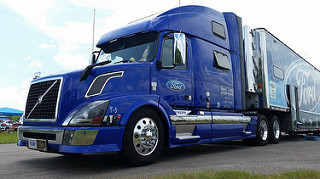Heavy Freight Growth Expected Over the Next Decade

The trucking industry is crucial to the success of the American economy. Shipping by truck is typically less expensive than air freight. In addition, trucks can reach more locations than container ships, rail cars, and other types of transportation. That’s why it’s not surprising that the freight truck industry is expected to grow dramatically over the next 10 to 15 years. Take a closer look at the challenges the industry can expect and how supply chains can prepare.
Projections for Heavy Freight Growth
The American Trucking Association (ATA) released a report at the end of 2016 projecting a freight volume increase of 28.6 percent over the next 11 years. That translates to an increase in freight revenue of $1.52 trillion by 2026. Bob Costello, Chief Economist at ATA, stated, “The outlook for all modes of freight transportation remains bright. Continued population growth, expansion of the energy sector, and foreign trade will boost trucking, intermodal rail, and pipeline shipments in particular.”
Freight growth is good news for the U.S. economy, but it does present a challenge to the trucking industry. There is already a driver shortage, and trucking companies have done little to combat the problem. Freight truck companies can only increase driver pay so much without digging into their profits. They also struggle to find qualified applicants. Beyond that, the negative truck driver stigma also presents a problem in recruiting new drivers.
Shipping Companies Must Invest in Technology
Shippers need to prepare for the freight volume increase. This means hiring new drivers and investing in freight technology. The industry will likely see a move towards larger, class-8 trucks to combat the driver shortage, but the trucking industry will also need to innovate to make sure that it keeps up with shipping demand. Possible improvements to the trucking industry include drones, on-site 3-D product printing, and driverless trucks. These are all things that could be a reality for shipping in the not-so-distant future.
It won’t be long before trucking companies reach their capacity thresholds and fail to deliver orders to customers in a timely manner. Some companies may need to hire their own private fleet of trucks and manage shipping on their own. Of course, this is likely only a solution for large companies with a lot of capital. A private fleet of trucks is not ideal because of the expense, but it does help ensure products get to their destination.
Freight Rate Projections
If shipping companies don’t find a way to keep up with demand, customers can expect higher rates. LTL freight has already seen a 4.9 percent increase in rates in the past year. Of course, demand isn’t the only factor in determining freight rates. Fuel costs, investments, and the health of the economy also affect rates, but demand is a major contributor.
Staying ahead of the trend will be important for shipping companies. They are often hesitant about investing in new technology because the market is never completely reliable or stable. However, the huge freight growth projection should prompt action.








